#AAPA
Text
Inspired
I had a pre-PA shadow this week who is in a bit of a lull with the whole "process" of applying to PA school, taking classes, etc. They shadowed me and were so thankful for the opportunity - that they can see where they can be later and know that the work is worth it.
The P R O C E S S sucks so bad. I recall feeling very stressed, alone, anxious, etc. When I had positive shadowing or medical experiences at work, it was a reminder of WHY I was working so hard.
So, to all you pre-PA people out there wondering if it is worth it or if the process will end, it will. One day it will end with [your name here] PA-C. I promise.
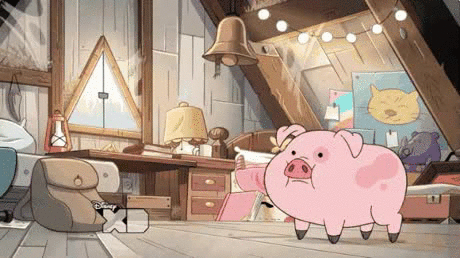
#pre-pa#pablr#pa-s#pa-c#physician assistant#physician associate#aapa#nccpa#caspa#grad school#medicine#health care careers#pa school
6 notes
·
View notes
Text
Space Tunnel LED
0 notes
Text
Celebrating PA Week 2022
Celebrating PA Week 2022
Tools and resources for PA Week 2022
Every year the PA profession is celebrated during the week of October 6 – 12. As a PA, it is your opportunity to celebrate, advocate and educate others on the PA profession. The AAPA provides a variety of tools to help. Check out the resources below and get involved.
PAs Go Beyond Toolkit:
Share our social media posts and graphics (use the hashtag…

View On WordPress
0 notes
Text


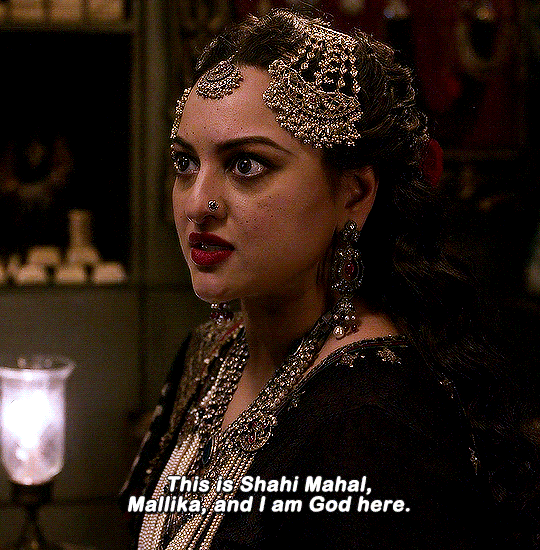
You had no right to sell Imaad, Aapa!
What else could I have done? Have him become a pimp? Let him become an addict? Or let him become a eunuch?
HEERAMANDI, 1.01 (Mallikajaan: The Queen of Heeramandi)
#bollywoodedit#tvedit#tvgifs#cinematv#dailyflicks#dailytvfilmgifs#bollywood#heeramandi#sonakshi sinha#perioddramaedit#perioddramasource#*#roedits#did i have issues with the story? yes#did i still devour it? also yes#sonakshi and manisha killed it#slb niece on the other hand#the less said the better#q
293 notes
·
View notes
Text
I woke up just now but in half asleep summer nap state I will roll for Heermandi
1. I felt that Alamzeb's casting could be better. The girl was pretty but yet I could not feel the budding romantic expressions on her face and body language. Like that sharmana and poetry narration felt very forced.
2. TAJDAR WHY WHY WHY SLB I WILL NEVER FORGIVE YOU. No spoilers. Tajdar is very charming, amazing voice, very handsome.
3. Okay considering the history of tawaifs I was at times so mad at Alam and was about to hit the phone screen to say woman wake up to reality.
4. Lajjo and Zorawar's story. Why he left her, her addiction and Lajjo's story could have been explored more. You have such a brilliant actress and when SLB is noted for using actors and their character to their greatest potential, I felt he did not not do that with lajjo this time. We only see her enter in sakal ban, she is always drinking and thinking about Zorawar
5. Manisha was brilliant. The ruthlessness, the wit and slyness. And for a tawaif of those times whose existence and power is constantly challenged, by other tawaifs and rivals and then nawabs and British she has to be so clever, cunning and vicious. Yet her feelings for Alam especially by the end (spoiler free) did make me understand her stony heart more.
6. Aditi as Bibbo was charming, graceful and elegant. And goddamn the way she uses her skills to charm henderson so she may help her people to fight against the British.
7. Star villain Fareedan. I was looking forward to her schemes. And it was understandable why she hates Mallikajaan (manisha). The power play, the constant challenging was interesting to watch. Also sonakshi really acted well, both as Fareedan and as Rehana aapa. I won't say much because the way her character changed at a point where mallika was violated (watch the series for that) like it made me get an overview of these women. Women who were wronged since birth, clinging on to their art and performance, carving a distinct identity for themselves and yet having pride over who they are, and despite all the politics, inner enmity and betrayals, they still did not wish the worst to each other and later come together for they all share one pain.
8. The women if heeramandi coming together to fight for the British got me goosebumps. They decide to use all their money and life to fight for the country. Aditi's (bibbo) dialouge ek baar mujrevali nahi mulkvali bannke sochiye and another dialouge which meant that when the country is burning one does not organise lavish gatherings (mujra mushayra)
9. Songs were pretty good. Sakal ban was trending and I loved the other songs too. Reminded me of Pakeezah
10. Sanjeeda Shaikh as Waheeda. Bhai I used to feel so bad for her. She was betrayed everytime. Poor girl wanted power too like her sister but I understand why she wasn't given. Tawaifs cannot be put into a box. They aren't your gentle shy lover girl type women like we see in pakeezah, the lovely shy, sweet, pure sahibjaan. Their world is a golden cage and to survive here is a war fought everyday.
11. Tajdar ka baap kya gadha egoistic aadmi hai
12. End thoughts: aesthetics = 100/10. I was still looking for slb to explore more of their emotions and life and not just their opulence. Summing up everything, heermandi: 7/10
189 notes
·
View notes
Text
Rangrez
Chaper 6- Gajgamini
S/n: I AM SORRy this is too late, but you will realize when you read this. You guys are gonna hopefully love it. Also kainat's day to day activities involves rizzing, depression, and happy.

Ram could hear jingling of ghungroo from inside. The door was open, just a curtain draped on the frame, sunlight passing through. Ram's first time to ever visit Kainat's home. On the way he realised that he should probably bring some souvenir, as a token of apology or as a gift for her new place. He stood by the entrance, wrapped mogra in leaves in hand, seeing Kainat whose back was turned towards him.
His gaze couldn't move from her, the sweetness of her ghungroo, white skirt, black blouse, long plaits with a statement hair pin and gold earrings. She walked like a swan, her hips and folds dipping down, and up. Ram could feel his heart hammering in his chest. Every step, every movement of her waist sent him in a frenzy. She finally turned around- he was at lost. And her big eyes stalled on the masculine figure. Kainat's face was glowing in sweat, cheeks blushing and lips plump. Ram stared as if his eyes could devour everything she has to show. Kainat's hand came close to her bosom, and tucked her pallu in her skirt.
Kainat cocked an eyebrow, and just by the movement of her pupils, she asked Ram to sit on the wooden chair. Ram stammered, but managed to be seated. Kainat smiled to herself and bowed just a bit, her hand waving in a graceful manner. "Aadab".
Ram bowed his head in return. Why did he find her so alluring now? Kainat walked to the earthen matka, dipping a steel glass in the cold water. "Delhi is hotter than Lahore" she stated, and could see Ram nodding from her peripheral vision. He couldn't help but stare at her, the droplets of water that missed her lips traveling down from her neck, inside her blouse. Ram looked away. She was always pretty, yes, but why so attractive now?
"What brings you here, Mr. Ramaraju?" Kainat kept a glass of water on the table beside Ram, and Ram could smell the roses rubbed on her skin. She took a few steps back, and sat on the floor in front of him. "Did you bring the flowers for your wife?" Her leg extended from the ruffles of skirt, untying her ghungru.
Ram smirked. "No, they are for you" he said, and kept them on the table. Ram saw her bending to open the knots, her cleavage peaking from the dark, heart shaped blouse. There were intricate designs on sleeves too, and the skirt had a thick work on border. It looked expensive. "You're staring" Kainat didn't have to look up from her business to notice that. Ram smiled and looked away.
"Won't your wife be mad that you got me flowers?" Kainat asked, getting up. Ram nodded. "I am not married" he said, drinking from the glass. "What about any lover?" Kainat kept her ghungru on the table near her, wrapping them in the bag. Ram hummed to deny, still drinking water. "Well you looked like someone who could get used to some pleasure" Kainat's word made Ram choke. He coughed on the water, only to hear Kainat giggle.
She strolled back to sit in front of him on the floor, with Ram's eyes stalking her every movement. "What brings you here? Wasn't insulting me enough in front of everyone?" Ram was surprised to see how easily she said so, no grief or remorse on her face- just a sensual smile and doe eyes. Though, Ram's eyes held deep sorrow. "I came to apologise".
Kainat's eyebrows shot up. "All I got to know from Lahore is that no one knew you or had a complaint against you" Ram said, and he moved down to sit on the floor in front of her. He saw Kainat's downturn face. "What's wrong?" Kainat looked up again, and shook her head with a smile. Ram didn't want to probe, but she looked disappointed. "Tell me" he said.
"It's weird that they said they don't know me. I'm sure they went to my home, asked about me. Rehana aapa would never say she didn't know me." Kainat's voice was just above a whisper. Ram stared at her long face. "It's like being disowned by the very person who shares the same blood, as if she no longer acknowledges my existence. I was expecting her to be upset- but did she really said she didn't know me?" Ram's eyes locked with her eager ones. He couldn't help but just sigh and nod.
"Kainat" the word rolled from Ram's kips, and it held a depth it never did before. "Your value isn't determined by your relations. Or your family's rejections. Now that you have left that behind, don't let it tie you down- rather start building your life in Delhi now." That was the last thing she was expecting from this man. To be kind, and respectful to her? She might have judged him too soon. Kainat nodded, emitting a smile. His reassurance did give some solace- a need of support in the new city.
"Show what you got me?" Kainat said, trying to lighten the mood. Ram beamed and picked up the green packet, unwrapping the thin rope from it. He pulled the white flowers out, and handed them to Kainat. "Pretty" she muttered, taking a whiff from them. Kainat stood up, to put them in her hair by the mirror. Taking a hairpin, she attached them, looking at herself. The flowers did match her with her dress. From the reflection in the mirror, Ram raised his eyebrows to ask if she liked them, and Kainat moved her head like a pigeon, her large earrings moving with her head, and the mogra swinging. She liked them.
Kainat turned around, hand clasped together, a pink blush on her face. Almost immediately, she skipped inside, leaving Ram baffled. Confused, he stood there awkwardly, listening to clang of utensils inside. "I forgot that I have made this, how about you try some?" Kainat made her way out, stirring a bowl with spoon. She handed the copper bowl to Ram, smiling. Ram looked at the colourful dish, probably something sweet. "Wha-" "Mutanjan" "Mutanjan?" Kainat nodded. "Sweet rainbow rice?" She said, hands behind her back, expectantly looking at the brooding man. He took a spoonful, constantly maintaining eye contact with Kainat. The poor girl gulped, feeling hot all over. They stared at each other, when Ram cocked his eyebrow, like Kainat did. He then ate another spoonful of rice, moving his head in agreement, like Kainat did. She laughed, slightly bending forward. If Ram did the same, they might be touching each other then.
Ram and Kainat were back on the floor, as Kainat stared at Ram eating up. "What's your full name?" She asked, hugging her knees. "Alluri Sitaramaraju" he said with a mouthful. "You must be from-" "southern India". Kainat nodded, slowly, resting her chin back on her knees. "Well thank you for that" Ram smiled at the young woman and kept the utensils on the floor. "My uncle would really love this" he continued, and Kainat peered up at him from her eyelashes. Ram's world stopped for the third time now. "He lives with you?" "Hm? Oh, not really. But we meet often. I live near the police barracks" Kainat nodded again, crossing her legs. "You really like my cooking" She said, when Ram looked at the time. He should get going.
He stood up, smiling. "I do, I guess" he looked down to see Kainat's hand reaching up towards him. He clasped it to pull her up, some flowers loosing their hold from her hair. "Why don't you come over?" Kainat's heart filled with excitement upon his question. She nodded aggressively, holding the door as Ram made his way out. "Just ask Akhtar to drop you there" Ram put his shoes on and then put his hands in pocket.
The evening glow filled her eyes with brown honey, and a pink cascade on her face. Ram really tried to look away, but he couldn't. He didn't even notice when her hands reached forward, plucking the rice from his thick moustache. "I'll take my leave now" he muttered, his eyes lost. Kainat nodded. She felt like she should say something- but what? Ram turned around and left, a soft glow in his heart. He fisted the hand he touched her with.
------------------------------------------------------------------------
Tagging: @yehsahihai @definitelyhim @vijayasena @jkdaddy01 @jeniniie @starlight-1010 @ramayantika @lilliebeingdelulu @panikk-attackkk @multifandom-boss-bitch
13 notes
·
View notes
Text
Ok. With Ms Marvel out, I'm betting there will be a lot of fanfic writers getting in on the new work. So, whether its for writing, or just general know-how, I'm going to explain how Pakistani terms of address work.
Beta: Not like that alpha male nonsense. Beta means son.
Beti is the female version, meaning daughter. But, that is used only for introductions. Like, if we say "this is my daughter" then you'd use beti. In all other circumstances you'd say beta, regardless of gender.
Ammi: Mother. Other words could be Mummy, Mama, etc.
Abbu: Father. Other words could be Papa, Baba, etc.
Bhayya: Brother. Technically the word for brother is bhai. But, we use them alternatively, just put it at the end of the brother's name. Like, if the character's brother is called Abdullah, the character would call them Abdullah Bhayya, or Abdullah Bhai, depending on preference. You can call other older brother-type figures in your life brother as well, and if he's your cousin or something.
Aapa: Sister, same with the brother. Except other viable words are Aapi and Baaji.
Auntie: This is not for familial relations. Just, an older woman, around your mother's age or older will be referred to as Auntie. Like Aapa and Bhayya, you put the word Auntie after the woman's name.
Uncle: Same rules as Auntie. Still not for relatives.
Nani: Maternal Grandmother, also put after her name.
Nana: Maternal Grandfather
Dadi: Paternal Grandmother
Dada: Paternal Grandfather.
Figure the rest out. There's a lot of words.
#ms marvel#just adding that tag bc if someone messes up in ms marvel fics i will lose it#desi stuff for foreigners#writing tips ig
515 notes
·
View notes
Text
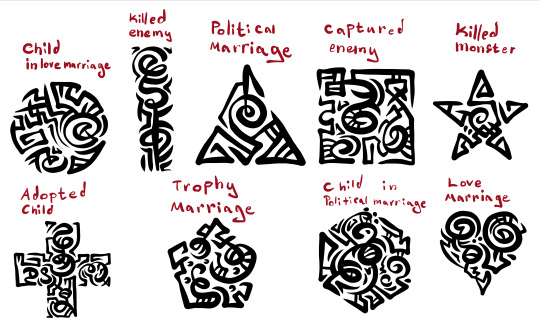
Have been thinking about fleshing out Aapa (a species of atan - humans - in my Raclis) and one idea I had was that some tribes got this tradition of tattoos as a way of carrying information about the person.
Those tribes have strong polyamoric culture, as men and women can have many partners in different kinds of relationship. In this draft there are three such specified - Love marriage, Political marriage, and Trophy marriage.
Note that there is no tattoo signifier for children inside a trophy marriage - those'd be equivalent to out-of-wedlock kids, bastards, in Europe.
The filling of such tattoo matters not - any wiggles and designs can do, what matters is the shape of the outline.
Note: the child tattoos are for the parent. Tattoo placement doesn't matter, either, but could have significance in specific cases.
#worldbuilding#fantasy worldbuilding#fantasy#fantasy world#worldbuilding ideas#Raclis#fantasy tattoo#tattoo
16 notes
·
View notes
Text
Purane yaar bhi aapas mei ab nahi milte
Na jaane kaun kahan dil laga ke baith gaya
- fazil jamili
#poetry#urdu stuff#urdupoetry#urduquotes#urdu literature#urduadab#urdu lines#urdu ghazal#urduzone#dark academia
82 notes
·
View notes
Text
Thinking abt the first episode and Aapa not flying. Later in the series we see Appa fly to the point of falling asleep in the air. Also, he's spent 100 yrs pretty much resting. It always just seemed a bit strange to me, then I was thinking
What if Appa, instead of not flying because he was tired, wasn't flying because the last time he flew was in a storm where he and Aang almost drowned and died? Like, animals can experience trauma too, and Appa is highly intelligent.
Honestly, I wonder if it wasn't more Katara's pep talk that got to Appa. Like, he's pretending to be tired so he doesn't have to fly, but then Katara points out how Aang is in danger. Either Sokka saying 'yip-yip' was just the final spur or, honestly, when I rewatch it, it may be coincidence because it looks like Appa is psyching himself up to it from the moment Katara says 'Don't you want to save Aang?' and the music starts up.
I'm just saying, we should acknowledge Appa trauma a little more
7 notes
·
View notes
Text

[ID/A dark red line with gold lining and a repeating star and half moon pattern./end ID]
Aapasuolexic / Aapamirelexic
[PT/Aapasuolexic / aapamirelexic/end PT]
Tel lexegenders related to the words Aapasuo and Aapa mire which both are words for string bogs.
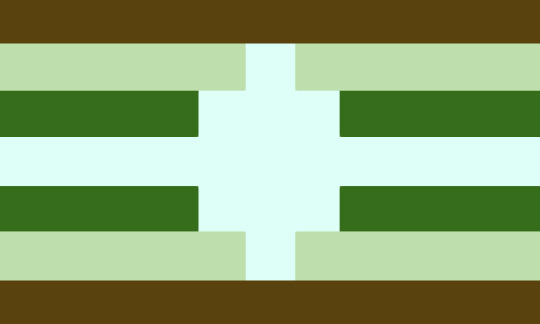

[ID/a flag with 7 stripes colored dull brown, light leaf green, forest green, light blue, forest green, light leaf green, and dull brown. in the center is a light blue symbol with a square as its base shape, and in the middle is a vertical line that stops at the top and bottom lines./end ID]
[ID/a flag with 7 stripes colored dull brown, light leaf green, forest green, light sandy brown, forest green, light leaf green, and dull brown. in the center is a light sandy brown symbol with a square as its base shape, and in the middle is a vertical line that stops at the top and bottom lines./end ID]

[ID/A dark red line with gold lining and a repeating star and half moon pattern./end ID]
Etymology: Aapasuo / aapa + mire + lexe + ic
Aapasuo from Finnish & Aapa (derived from Finnish) mire from English.
Requested by none.
Taglist: @lexicarchive @radiomogai @obscurian
[🪦]Please do not tag my neogenders as xenogenders they aren't xenogenders! Kiitos (thank you).
#: koiran nappulat#lexegender#lexic#lexic gender#liom#mogai#liom community#mogai community#liom label#mogai label#liom safe#mogai safe#mogai blog#liom blog
5 notes
·
View notes
Text
The first 💌 is now live. You can read it at the link above. It is written in Urdu script and Roman Urdu and includes an audio recording if you prefer to listen rather than read.
An excerpt:


11 notes
·
View notes
Text
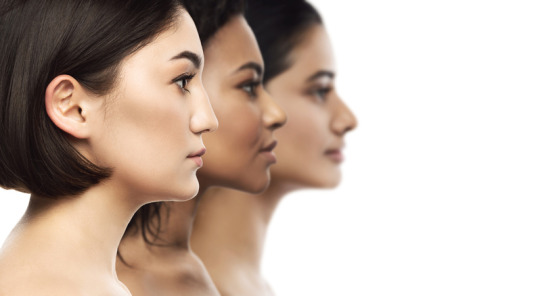
When and why yellow was first applied to people of East Asian descent is rather murky.
The process occurred over hundreds of years. As some scholars have noted, it's not as if there were people with yellow skin. The whole "yellow equals Asian" thing had to be invented. And in fact, there was a time when there was no such thing as "Asian" — even that had to be invented.

Enter Carl Linnaeus, an influential Swedish physician and botanist now known as the "father of modern taxonomy." In 1735, Linnaeus separated humans into four groups, including Homo Asiaticus — Asian Man. The other three categories, European, African and American, already had established — albeit arbitrary — colors: white, black and red. Linnaeus, searching for a distinguishing color for his Asian Man, eventually declared Asians the color "luridus," meaning "lurid," "sallow," or "pale yellow."
I get this bit of history from Michael Keevak, a professor at National Taiwan University, who writes in his book Becoming Yellow: A Short History of Racial Thinkingthat "Luridus also appeared in several of Linnaeus's botanical publications to characterize unhealthy and toxic plants."
Keevak argues that these early European anthropologists used "yellow" to refer to Asian people because "Asia was seductive, mysterious, full of pleasures and spices and perfumes and fantastic wealth." Yellow had multiple connotations, which included both "serene" and "happy," as well as "toxic" and "impure."
He tells me that there was "something dangerous, exotic and threatening about Asia that 'yellow' ... helped reinforce."
Which might explain why the fear that East Asian countries would take over the West became known as yellow peril.
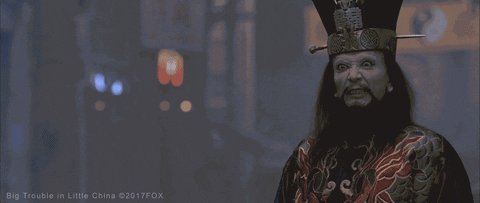
In 1956, Marvel's short-lived Yellow Claw comic featured a villain of the title's name. He was drawn with a bald head, long scraggly beard, slanted eyes and, yes, fingers that resembled claws. True to the name, his skin had a distinct yellow hue.
That was all make-believe. The real-life consequence of vilifying a race included things like the Chinese Exclusion Act of 1882, which banned Chinese immigration to the United States until 1943; the violence against hundreds of Filipino farmworkers in Exeter and Watsonville, Calif., who were mobbed and driven out of their homes by white Americans in 1929 and 1930; and the incarceration of more than 100,000 Japanese Americans during World War II.
For as long as Asians have lived in the United States, white people have been trying to label us: who we are, what we look like and how we should be described. It was also white people who defined our terminology — for many decades, "Orientals" was the moniker of choice. (And when people hurled slurs at us, we've been called Chinamen, Japs, gooks, Asiatics, Mongols and Chinks.)
That started to shift in the 1960s.
That's when the term "Asian American" was born. At the time, it was linked to political advocacy. Yuji Ichioka, then a graduate student and activist at the University of California, Berkeley, who would later become a leading historian and scholar, is widely credited with coining the term.
This period, often referred to as the Yellow Power Movement, was one of the first times these disparate people — Korean Americans, Vietnamese Americans, Japanese Americans, Indian Americans, Laotian Americans, Cambodian Americans, to name only some — grouped themselves under one pan-ethnic identity.
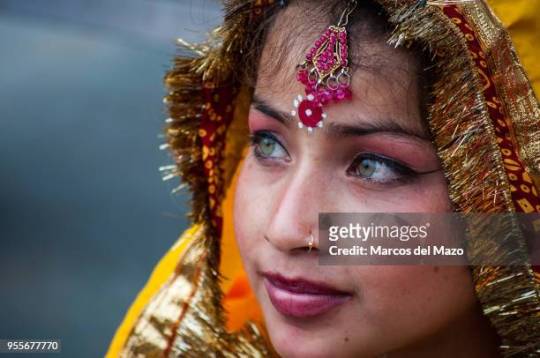
There was power in numbers, which Ichioka knew as founder of the Asian American Political Alliance. In a letter and questionnaire to new members, AAPA made clear that its organization was not just advocating for the creation of Asian American studies courses, but for broader social causes. That included adopting socialist policies and supporting the Black Liberation Movement, the Women's Liberation Movement, and anti-Vietnam and anti-imperialist efforts.
Spurred in part by the activism of the times, the term "Asian American" rose to popularity. It also helped that the Immigration and Nationality Act of 1965 was passed, allowing an influx of Asian immigrants to the U.S.
But over the years, the term Asian American revealed itself to be a complicated solution to the problem of identity.
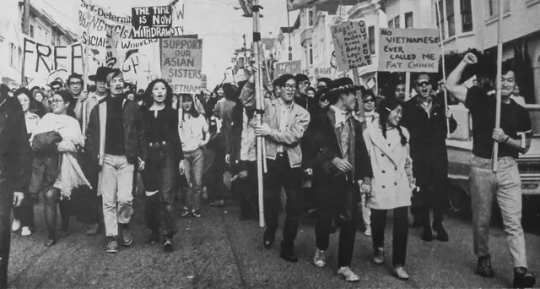
For one thing, most people who technically fit into the "Asian American" category refer to themselves based on their ethnic group or country of origin, according to the National Asian American Survey (NAAS).
Karthick Ramakrishnan, a professor at the University of California, Riverside, and the leader of NAAS, says he and his colleagues found that most Americans think of "Asian Americans" as East Asians.
Karen Ishizuka, who wrote Serve the People: Making Asian America in the Long Sixties, says that "Asian American" is still an important identifier because of the political power it has carried for decades. But it's crucial for people to be educated about what it once meant, she says, because the term has become "more like an adjective now, rather than a political identity."
Ramakrishnan and Ishizuka seem to reinforce why I've been searching for a term like yellow. In all my conversations about this issue, I've found myself remarking how the question of "What about yellow?" feels so hair-pullingly existential. Maybe it's because Asian American seems like it has been watered down from activism to adjective. I find myself wanting a label that cuts a little deeper.
In 1969, a Japanese American activist named Larry Kubota wrote a manifesto called "Yellow Power!" that was published in Gidra, a radical magazinecreated by Asian American activists at the University of California, Los Angeles.
His words were a rallying cry. "Yellow power is a call for all Asian Americans to end the silence that has condemned us to suffer in this racist society and to unite with our black, brown and red brothers of the Third World for survival, self-determination and the creation of a more humanistic society," he wrote.
Kubota wasn't the only one using yellow in a new and different way.
Ishizuka tells me about a bunch of different groups in the 1960s and 1970s: Yellow Seeds was a radical organization in Philadelphia that published a bilingual English-Chinese newspaper of the same name. The Yellow Identity Symposium was a conference at Berkeley that helped ignite the Third World Liberation strikes. The Yellow Brotherhood was an Asian group made up mostly of former gang members in Los Angeles that tried to disband gangs and curb drug addiction. Yellow Pearl, a play on "yellow peril," was a music project started by an activist group in New York's Chinatown.
I call up Russell Leong. He is a professor emeritus at UCLA and was the longtime editor of the radical Amerasia journal. As a kid, he used to make Yellow Power posters in San Francisco's Chinatown.
"Do you call yourself yellow?" I ask him.
"That's an interesting question," Leong says. "If I'm with a group of yellow people like my close friends, I'll call myself a Chink, a Chinaman, a yellow. But in public, I'm not gonna call anyone else that .... it depends what I'm comfortable with. It's the same with my English or Chinese name. Sometimes I'll use my American name. Sometimes I'll use my Chinese name."
Whatever the word, he adds, "I think it's better that we have more words to describe ourselves."
I get it. Despite the incompleteness of any one term, together they can become a powerful tool.
Still, if there were no term like "Asian American" — if it didn't exist, if we gave up on it entirely — then what could we have to anchor ourselves? After all, it's not just about a word; it's about an entire identity.
Ellen Wu, the historian from Indiana, digs into that point: "To circle back to this question of, do we use something like yellow or brown? ... Why do we even feel like we have to?"
Wu acknowledges that we're always craving words that might come closer to encapsulating who we are.
"I think that invisibility — that feeling that we don't matter, that worse, we're statistically insignificant — in some ways really fuels that desire to have a really concise and meaningful way of talking about ourselves," she says.
I pose all of this to Jenn Fang, an activist and writer who runs the appropriately-named blog Reappropriate.
She's not so convinced that yellow would resolve the issues that plague Asian American. It might be a useful identifier if yellow was used very intentionally and people knew its history, she says. But it could also fall into the same traps as Asian American. With ubiquity, it could eventually lose its power.
Fang also thinks that if people were to identify as yellow, there would be more people staying in their own lanes, so to speak — that, say, East Asians who call themselves yellow might not advocate on behalf of Asians who call themselves brown.
"Are you reclaiming the slur, or reclaiming our history?" Fang asks me. "The thing I'm concerned about is — is [yellow] a truly reflective way of talking about the East Asian American experience? Is yellow more nuancing? ... Or more flattening?"
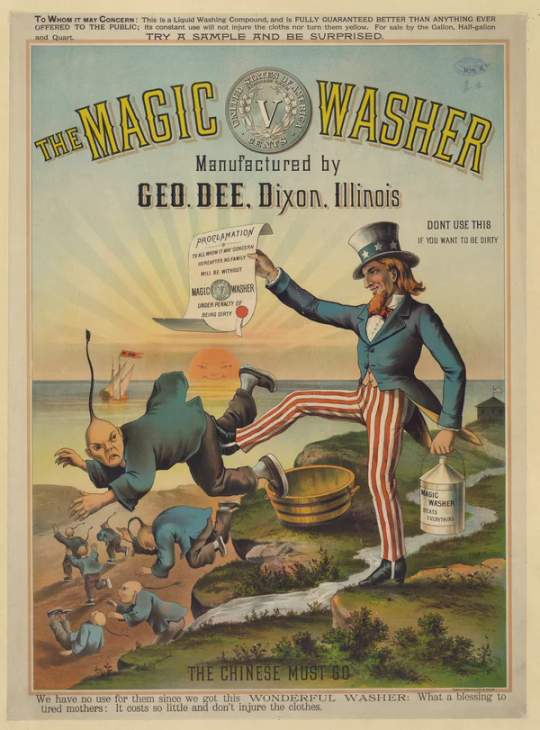
In the pinnacle of the civil rights era, activists used yellow as a term of empowerment — a term they chose for themselves. In some ways, I'm still seeing that today.
When the director of Crazy Rich Asians, Jon Chu, wanted to include a Mandarin version of Coldplay's song "Yellow" in a pivotal scene of his movie, some people were concerned that including it might not fly in such a high-profile movie about Asians. But that was exactly Chu's point. He wrote a letter to the band pleading his case — he wanted to attach something gorgeous to the word.
"If we're going to be called yellow," Chu wrote, "we're going to make it beautiful."
I can't help but think back to a group of people I spoke to late last year.
The Yellow Jackets Collective is an activist group, the name an echo of the 1960s. They're four people in New York City who identify themselves with a wide swath of terms, in addition to yellow: she/her, womxn, brown, Asian American, femme, child of Chinese immigrants, Korean American, 1st gen., first gen. diasporic and "collaborating towards futures that center marginalized bodies."
I send them an e-mail. "Why yellow?"
They point out that they don't just walk around the world calling every East Asian person they meet "yellow."
"Identity ideally is about you and how you feel and what you believe has shaped you," Michelle Ling responds.
I let Ling's words percolate. I don't know if I'll walk around in the world calling myself yellow — maybe to people who have similar experiences to mine; certainly not around people who've flung slurs at me.
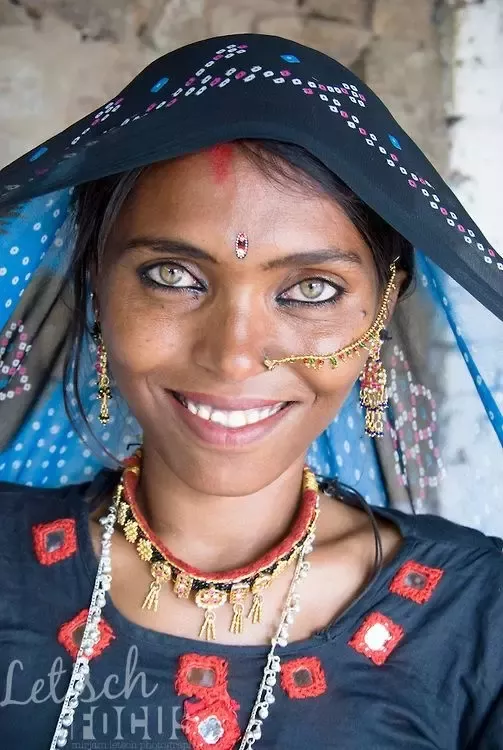
Even so, having different words to choose from is itself a comfort. Having yellow in my arsenal makes me feel like my identity doesn't hinge on just one thing — one phrase, one history or one experience.
After a back-and-forth with the group, something they've written stops me in my metaphorical tracks. It's from the Yellow Jackets mantra; a snapback comment that I can't help but appreciate:
"We say Yellow again because at our most powerful we are a YELLOW PERIL and those who oppress us should be afraid. We are watching you. We are making moves."

In “The Travels of Marco Polo,” the people of China are described as “white.” Records left by eighteenth century missionaries also report the skin color of Japanese and other East Asian people as clearly white. Yet in the nineteenth century, this perception quietly gave way to descriptions as “yellow.” In travel books, scientific discourse, and works of art, portrayals of East Asians began presenting them as having yellow skin. What happened in between?

In his 2011 book “Becoming Yellow: A Short History of Racial Thinking,” National Taiwan University professor Michael Keevak delves deeply into the origins and history of how and why East Asians went from being seen as “white” to being classified as “yellow.”
The first suspect implicated in applying the “yellow” label to East Asian faces is the famed Carl Linnaeus (1707-78). At first, Linnaeus used the Latin adjective “fuscus,” meaning “dark,” to describe the skin color of Asians. But in the tenth edition of his 1758-9 “Systema Naturae,” he specified it with the term “luridus,” meaning “light yellow” or “pale.”

It was Johann Friedrich Blumenbach (1752-1840) who went beyond the coloring ascribed by Linnaeus to apply the completely different label of “Mongolianness.” Regarded as a founder of comparative anatomy, the German zoologist did more than just use the Latin word “gilvus,” meaning “light yellow,” to describe East Asian skin color: he also implicated the Mongols, a name with troubling and threatening connotations for Europeans with their memories of Attila the Hun, Genghis Khan, and Timur.
While the references remained anomalous at first, travelers to East Asia gradually began describing locals there more and more as “yellow.” By the nineteenth century, Keevak argued, the “yellow race” become a key part of anthropology.
But the yellow label came associated with discrimination, exclusion, and violence. Just as no one in the world is purely white or black, neither does anyone actually have skin that is deep yellow. By “creating” a skin color and investing traits such as “Mongolian eyes,” the Mongolian birthmark, and mongolism (the old name for Down syndrome), Westerners made the perceived yellow race synonymous with abnormality. They also responded to the arrival of immigrants from Asia by sounding the alarm over the “yellow peril” - a term with a whole range of negative associations from overpopulation to heathenism, economic competition, and political and social regression. The hidden agenda of this racial color-coding becomes apparent when one considers who benefits from a hierarchy that places “yellow” and “black” beneath “white.”
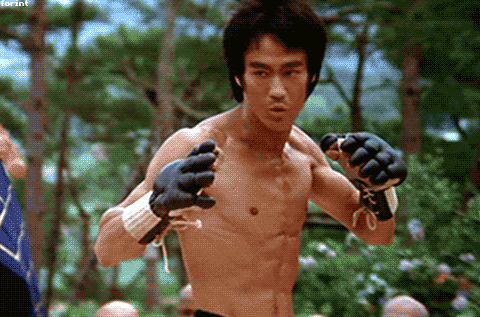
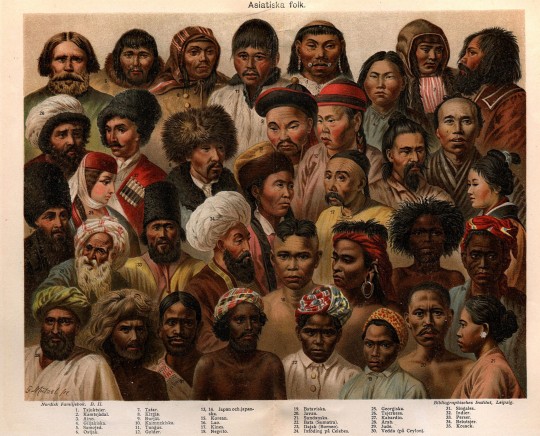
#kemetic dreams#asian#Blumenbach#german#european#exonym#banning exonyms#yellow#white#yellow people#black#black people#racist#conservatism#political#american politics#liberalism#civil rights#racist words#bruce lee#brownskin#brown skin#asian American#asian american literature#asian american history#asian heritage month#asian american author#asian american pacific islander heritage month#stop asian hate#aapi
4 notes
·
View notes
Text
omg so true fauxcest is a white people thing. yeah hahaha they’re so weird for that *scrambling to hide the love letters where i call her both aapa and ammi*

3 notes
·
View notes
Note
Hello, I hope you're having a good day and that this ask isn't a bother. I was hoping you could help me out with a question I had;
I believe you mentioned in a past post that 'aapa' is the Inupiatun word for father or grandfather - in regards to writing Water Tribe characters, would it be proper to use Aapa as a 'nickname' or form of address similar to grandpa, or would just sticking with Papaw or Gramps, etc, be better? I'm trying to use some variation in my writing since a number of characters mention their relatives, but I don't want to use the word if it would be incorrect in that context.
Not feeling my best tbh but i like answering questions like this so let's see if this makes my day a little better ^-^
Basically, aapa means father/dad (there isn't really any formal vs informal language in Inupiatun, our cultural never required that kind of distinction), and when English became more common, kids used it to address/refer to their parents' dads, or their grandfathers, because those were the people being called "aapa".
I don't think it's at all inappropriate to have Water Tribe characters call their grandfathers aapa. In fact, I think it's one of many little cultural things that make fanworks a joy to read and write. One little hint i'd like to offer is that irl it's considered to sound very village. Like it's used in a dialect most people associate with people who grew up in a village themself or were raised by someone who did, rather than in a town or city. I figure that might be helpful if you're one of those writing nerds who agonizes over the precise words each individual character uses in their dialogue and thoughts, because i know i am. ^-^
55 notes
·
View notes
Text
Or I could start ruminating more about some possible way to make a Fox's tongue and Kirin's Bone AU of AtLA
So, here's what I've got so far:
Airbenders=Enclavers. Sky bison take the cultural place of the griffins.
This has the unfortunate implication that the Avatar is Dead and Aaron Foxstongue looks just like him, so the Spirits have decided to do the whole switcharoo about it. If the dead avatar is Aang he will have already (recently) doppeled with Aapa so that he isn't completely out of the picture, but I'll have to make Being The Avatar Non-Dopple-able for that to work (Why can't Aapaang just pretend to be the Avatar? Simple! He got doppeled Pre-S1 and already has the weight of an entire civilization on his shoulders, he Refuses to take the weight of Avatar on as well). If the dead avatar is NOT Aang, then AANG will have to be this AU's Aaron, and that would most certainly be something. Not sure what or how, but something.
(Aang cannot be John Baker for Spoiler Reasons)
FTaKB is all about the Palace Intrigue while atla is more Action-adventure. I've about as much an idea of how to reconcile those two things as I have an idea on how to incorporate Toph, Sokka and Katara: i.e none.
2 notes
·
View notes